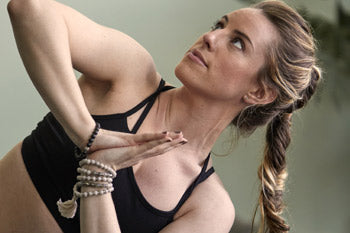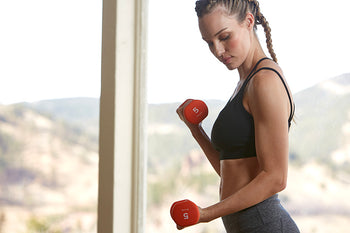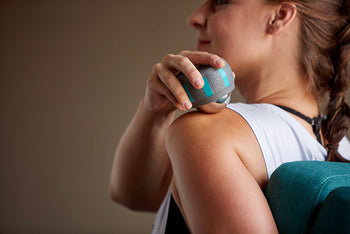Five Cardio Myths Exposed

Author: The FIRM Master Instructor Annie Lee
Are you confused by all of the information out there about cardio fitness and how to do it so that you get the best results?
“Eat before your workout — No, don’t eat before your workout!”
“Running burns the most calories but walking burns more fat!”
“Work out for 30 minutes a day or don’t bother working out at all!”
It’s enough to put any girl off her workout routine. That’s why we’re getting to the truth behind some popular “cardio myths” — to help you sort out the fact from the fiction.
1. You only burn fat when you’re exercising in the “fat-burning zone.”
You’ve probably seen it on cardio equipment or heard people talking about working out in the “fat-burning zone.” Or you may have heard that you need to work out at a low to moderately low steady-state intensity to burn more fat. Physiologically that does hold some truth, but ultimately a pound of fat equals 3,500 calories, and when you exercise — at any intensity level — you burn calories.
Of course, the more calories you burn during your cardio workout, the more fat you’ll lose. To burn more calories, add interval training and up the intensity of your cardio workout. A 2006 study published in the Journal of Applied Physiology showed that the most effective fat-burning cardio utilized interval training. The study showed that after two weeks, subjects increased their fat oxidation (burning of the fat) by 36 percent during the interval training exercise. It has also been shown that the post-workout benefits, fat oxidation and energy expenditure of interval training are significantly higher than with steady-state training.
2. The only way to increase or improve your cardiovascular fitness is through aerobic exercise such as running, walking or a step class.
This is not always true. Strength training can be just as aerobic when properly executed. We at The FIRM often use Peripheral Heart Action (PHA) sequencing (alternating upper- and lower-body sets with no rest in between) to make strength training more aerobic. Try doing 12 reps of these strength training exercises in a row without stopping: pushup, squat, overhead shoulder press,reverse lunge/dip and triceps kickback. You tell me if you’re not aerobically challenged!
3. You have to sweat a lot to get the most out of a cardio workout.
Have you noticed that the sweating rate is different from person to person? During or after a workout, some people look like they stepped out of a pool and then there are others who merely “glow.” Sweating during your cardio workout is really not indicative of how hard you are working. It is merely a mechanism that the body uses to cool itself. For example, during my warm-up I sweat like I just ran a marathon; that’s just the way that I am: a “sweat-er.”
4. If you don’t have 30 minutes to do cardio, then it’s not worth it.
I don’t know why people think that if they don’t have 30 minutes for cardio, they might as well not waste their time. Fortunately, any time you do any cardio or exercise you burn calories. Think of your exercise as accumulating throughout the day or even week. So even if you only have 10 minutes for cardio right now, you still have plenty of time. Because — guess what? — the next 10 minutes you do cardio and the next will accumulate into 30 minutes of burning calories! Not only that, but if you know that you only have a limited amount of time to do cardio, then you might even work out harder by upping the intensity, which would burn more calories. At the end of the day it is the net result of caloric expenditure that matters, so every minute counts.
5. To get the most benefit, do cardio on an empty stomach in a “fasted state.”
There are many different schools of thought on this one. Some believe that in order to “tap into the fat” (here we go again…) you have to do cardio on an empty stomach. Their theory is that if you do not have anything to burn from your previous meal, then it is easier for you to burn fat. Then there are others who say you need energy/fuel to do cardio, therefore you should eat before you work out. To put it simply, we are all different, and therefore our needs are different. It’s about listening to how your body feels. If you haven’t eaten anything for two hours before your scheduled cardio workout and you are starving, then you may want to fuel up with a light snack. But then again, there are individuals who feel sick when they eat something prior to their workout. There is no concrete rule on this one, so stop and take a moment to think about how your body feels.
Learn what steady state cardio is and what benefits you can see from adding it to your workout routine now!
Also in Blog

Body Peace & Personal Empowerment

Yoga for Swimmers: Poses for Strength and Mobility







